Types of Aircraft
[audio:https://aviationenglishblog.com/wp-content/uploads/2010/11/02typesofaircrafts.mp3|titles=Types of Aircrafts]TOPIC: Types of Aircraft
GOAL: To learn about the various types of aircraft
Level: Easy
Exercise #1: Read about types of aircraft and then proceed to Exercise #2
Going to an airshow can be a great experience. This is true, not only for the aerial demonstrations, but also the opportunity to see a wide variety of aircraft on static display. At these events, one quickly realizes there are many kinds of designs created with a particular mission in mind.
An aircraft is a vessel designed to move through the air. An airplane is a popular example of this type of vessel but there are many others. Helicopters, airships, and hot air balloons are also examples of different types of aircraft. An airplane may be one of the most recognizable types of aircraft. These vessels have fixed wings and propellers. Their body styles can greatly vary as there are many types and sizes of airplanes used for numerous reasons. These include seaplanes and jets.
Most airplanes require a runway for takeoff and landing. Some (like the Harrier) don’t. Seaplanes are an exception. These flying vessels can take off and land on water. One type, known as a floatplane, has floating structures extending from the bottom of the plane’s body to prevent it from touching the water. Another type, known as a flying boat, tends to have floating devices under the wings because part of the body rests in the water.
There are various types of aircraft that you can find in today’s skies. There are the helicopters, twin pistons, turboprops, executive jets, airliners, and cargo aircraft. Let’s take a few minutes to distinguish each of the types of aircraft one by one.
Lighter than air
 Lighter than air aircraft or aerostats use buoyancy to float in the air in much the same way that ships float on the water. They are characterized by one or more large gasbags or canopies, filled with a relatively low density gas such as helium, hydrogen or hot air, which is less dense than the surrounding air. When the weight of this is added to the weight of the aircraft structure, it adds up to the same weight as the air that the craft displaces.
Lighter than air aircraft or aerostats use buoyancy to float in the air in much the same way that ships float on the water. They are characterized by one or more large gasbags or canopies, filled with a relatively low density gas such as helium, hydrogen or hot air, which is less dense than the surrounding air. When the weight of this is added to the weight of the aircraft structure, it adds up to the same weight as the air that the craft displaces.
Originally, a balloon is any aerostat, while the term airship was used for large, powered aircraft designs – usually fixed-wing – though none had yet been built. The advent of powered balloons, called dirigible balloons, and later of rigid hulls allowing a great increase in size, began to change the way these words were used. Huge powered aerostats, characterized by a rigid outer framework and separate aerodynamic skin surrounding the gas bags, were produced, the Zeppelins being the largest and most famous. There were still no fixed-wing aircraft or non-rigid balloons large enough to be called airships, so "airship" came to be synonymous with these aircraft. Then several accidents, such as the Hindenburg disaster in 1937, led to the demise of these airships. Today a "balloon" is an unpowered aerostat, while an "airship" is a powered one.
A powered, steerable aerostat is called a dirigible. Sometimes this term is applied only to non-rigid balloons, and sometimes dirigible balloon is regarded as the definition of an airship (which may then be rigid or non-rigid). Non-rigid dirigibles are characterized by a moderately aerodynamic gasbag with stabilizing fins at the back. These soon became known as blimps. During the Second World War, this shape was widely adopted for tethered balloons; in windy weather, this both reduces the strain on the tether and stabilizes the balloon. The nickname blimp was adopted along with the shape. In modern times any small dirigible or airship is called a blimp, though a blimp may be unpowered as well as powered.
Heavier than air
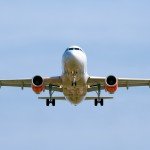 Heavier-than-air aircraft must find some way to push air or gas downwards, so that a reaction occurs (by Newton's laws of motion) to push the aircraft upwards. This dynamic movement through the air is the origin of the term aerodyne. There are two ways to produce dynamic upward thrust: aerodynamic lift, and powered lift in the form of engine thrust.
Heavier-than-air aircraft must find some way to push air or gas downwards, so that a reaction occurs (by Newton's laws of motion) to push the aircraft upwards. This dynamic movement through the air is the origin of the term aerodyne. There are two ways to produce dynamic upward thrust: aerodynamic lift, and powered lift in the form of engine thrust.
Aerodynamic lift is the most common, with fixed-wing aircraft being kept in the air by the forward movement of wings, and rotorcraft by spinning wing-shaped rotors sometimes called rotary wings. A wing is a flat, horizontal surface, usually shaped in cross-section as an aerofoil. To fly, air must flow over the wing and generate lift. A flexible wing is a wing made of fabric or thin sheet material, often stretched over a rigid frame. A kite is tethered to the ground and relies on the speed of the wind over its wings, which may be flexible or rigid, fixed or rotary.
With powered lift, the aircraft directs its engine thrust vertically downwards.
The initialism VTOL (vertical take off and landing) is applied to aircraft that can take off and land vertically. Most are rotorcraft. Others, such as the Hawker Siddeley Harrier and F-35B, take off and land vertically using powered lift and transfer to aerodynamic lift in steady flight. Similarly, STOL stands for short take off and landing. Some VTOL aircraft often operate in a short take off/vertical landing mode known as STOVL.
Fixed-wing
Airplanes or aeroplanes are technically called fixed-wing aircraft. The first heavier-than-air craft capable of controlled free flight were gliders. Besides the method of propulsion, fixed-wing aircraft are generally characterized by their wing configuration. The most important wing characteristics are:
- Number of wings – Monoplane, biplane, etc.
- Wing support – Braced or cantilever, rigid or flexible.
- Wing planform – including aspect ratio, angle of sweep and any variations along the span (including the important class of delta wings).
- Location of the horizontal stabilizer, if any.
- Dihedral angle – positive, zero or negative (anhedral).
A variable geometry aircraft can change its wing configuration during flight.
A flying wing has no fuselage, though it may have small blisters or pods. The opposite of this is a lifting body which has no wings, though it may have small stabilizing and control surfaces.
Most fixed-wing aircraft feature a tail unit or empennage incorporating vertical, and often horizontal, stabilizing surfaces.
Seaplanes are aircraft that land on water, and they fit into two broad classes: Flying boats are supported on the water by their fuselage. A float plane's fuselage remains clear of the water at all times, the aircraft being supported by two or more floats attached to the fuselage and/or wings. Some examples of both flying boats and float planes are amphibious, being able to take off from and alight on both land and water.
Some people consider wing-in-ground-effect vehicles to be fixed-wing aircraft, others do not. These craft "fly" close to the surface of the ground or water. An example is the Russian ekranoplan (nicknamed the "Caspian Sea Monster").
Rotorcraft
 Rotorcraft, or rotary-wing aircraft, use a spinning rotor with aerofoil section blades (a rotary wing) to provide lift. Types include helicopters, autogyros and various hybrids such as gyrodynes and compound rotorcraft.
Rotorcraft, or rotary-wing aircraft, use a spinning rotor with aerofoil section blades (a rotary wing) to provide lift. Types include helicopters, autogyros and various hybrids such as gyrodynes and compound rotorcraft.
Helicopters have powered rotors. The rotor is driven (directly or indirectly) by an engine and pushes air downwards to create lift. By tilting the rotor forwards, the downwards flow is tilted backwards, producing thrust for forward flight.
Autogyros or gyroplanes have unpowered rotors, with a separate power plant to provide thrust. The rotor is tilted backwards. As the autogyro moves forward, air blows upwards through it, making it spin.(cf. Autorotation)
This spinning dramatically increases the speed of airflow over the rotor, to provide lift. Gyrodynes are a form of helicopter, where forward thrust is obtained from a separate propulsion device rather than from tilting the rotor. The definition of a 'gyrodyne' has changed over the years, sometimes including equivalent autogyro designs. The most important characteristic is that in forward flight air does not flow significantly either up or down through the rotor disc but primarily across it. The Heliplane is a similar idea.
Compound rotorcraft have wings which provide some or all of the lift in forward flight. Compound helicopters and compound autogyros have been built, and some forms of gyroplane may be referred to as compound gyroplanes. Tiltrotor aircraft (such as the V-22 Osprey) have their rotors horizontal for vertical flight, and pivot the rotors vertically like a propeller for forward flight. The Coleopter had a cylindrical wing forming a duct around the rotor. On the ground it sat on its tail, and took off and landed vertically like a helicopter. The whole aircraft would then have tilted forward to fly as a propeller-driven fixed-wing aircraft using the duct as a wing (though this transition was never achieved in practice.)
Some rotorcraft have reaction-powered rotors with gas jets at the tips, but most have one or more lift rotors powered from engine-driven shafts.
Exercise #2: Watch the video then go to Exercise #3
Would you like to practice your aircraft recognition skills? Try this quiz
http://www.airliners.net/quiz/
Exercise #3: Matching: Using the following vocabulary list, match the lettered aircraft images with their appropriate terminology.
| Fixed-wing floatplane | Blimp | Glider |
| Rotorcraft | Fixed-wing | Balloon |
a) |
b)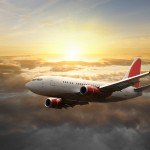 |
c) |
d) |
e) |
f) 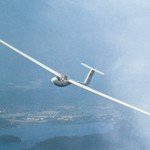 |
A___________
B___________
C___________
D___________
E___________
F___________
For Aviation English lesssons come and talk to me on Skype: inglesaviacao.
Answers: (A) balloon (B) fixed-wing (C) rotorcraft (D) fixed-wing floatplane (E) blimp (F) glider











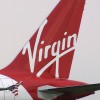



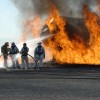
I am one of the who likes to be a pilot. This website give me a more knowledge about different kinds of aeroplanes.